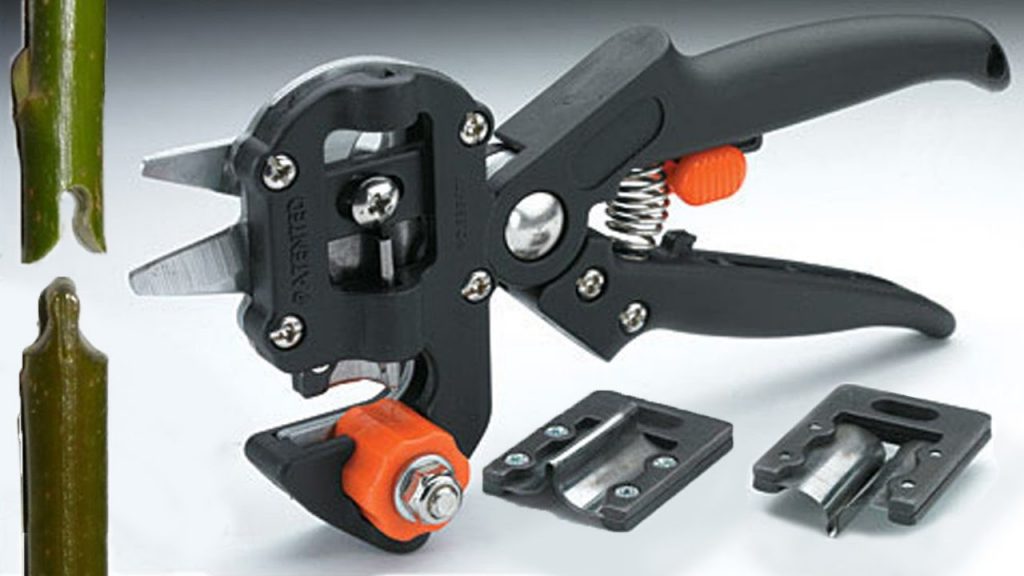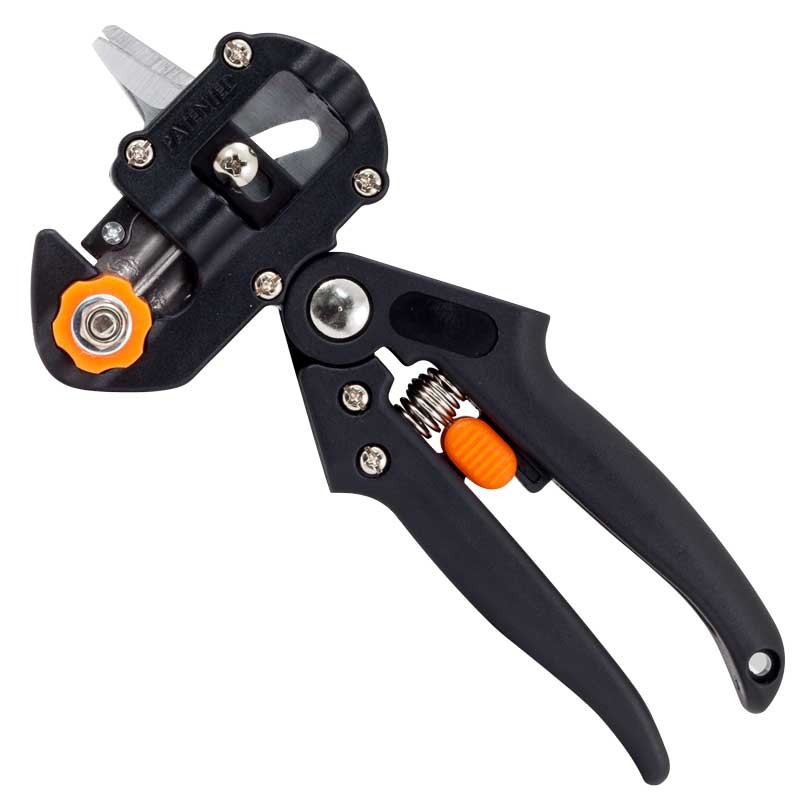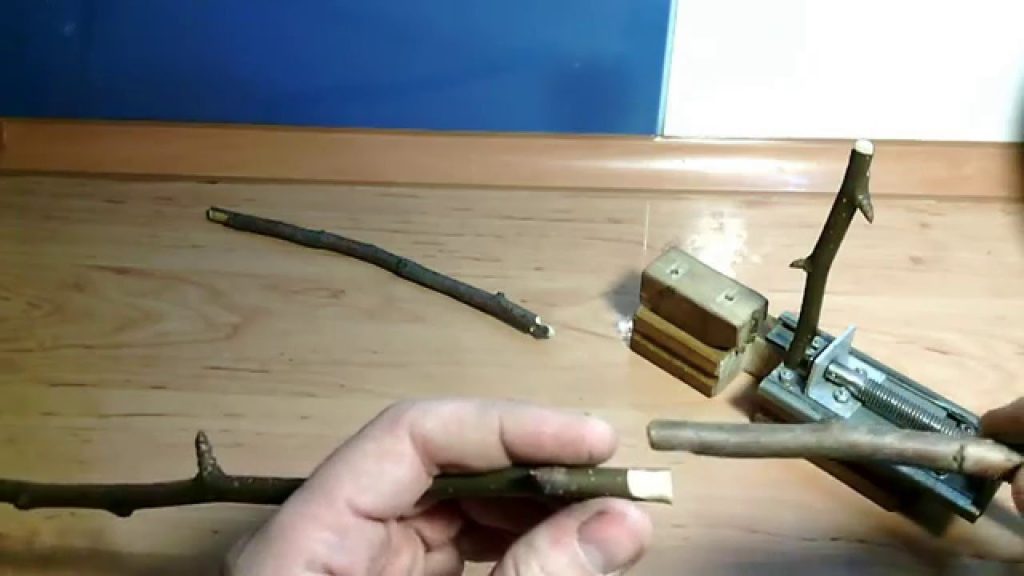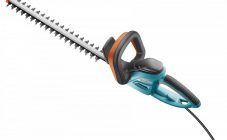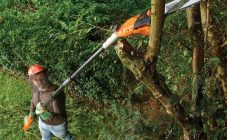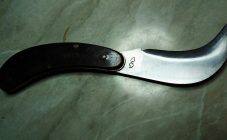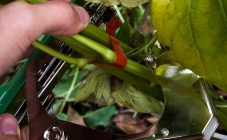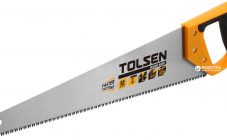Content:
The grafting sector is a very necessary and useful thing in the dacha economy, which facilitates not only the process of plant reproduction, but also caring for them. The human factor is almost completely excluded from the work, the owner can only correctly connect the branches and process the place of the scion. Such a novelty quickly began to gain popularity not only abroad, but also in Russia. But even now, not everyone knows how this invention works, and what is the principle of its operation, as well as whether it is really worth the money spent.
Description of the device
The principle of operation of the pruner for grafting fruit trees is significantly different from the usual garden pruner, to which everyone has long been accustomed. The tool is equipped with a working blade, with the help of which a figured cut is made on the branch, allowing you to create a perfect adhesion of the two parts. The other blade serves as a support. At the same time, it should repeat as much as possible the profile of the branch at the moment when it rests on it, so as not to injure the young tree.
The pruner has a special groove through which the juice released during squeezing should drain. The fit of the anvil and cutter blades can be secured with a bolt and nut. A simple spring mechanism helps to return the tool to its original position.
The quality of the cut largely depends on the material from which the main parts of the secateurs are made, in particular, its cutting part. The method of fastening and manufacturing of the components themselves and the thickness of the cutting parts also play an important role. The best quality grafting secateurs are considered, made of high-carbon steel by forging or riveting. The forged tool is particularly durable, but significantly exceeds riveted counterparts in price.
Visible benefits
Tree pruning shears have tremendous advantages over using a knife or a conventional garden pruner:
- thanks to the presence of a curly knife, it becomes possible to make a mirror-like cut on the rootstock and scion, as a result of which the survival rate rises to 70-80%;
- planting trees and shrubs becomes much easier and more interesting;
- the tool is distinguished by high strength and reliability, it has served for several decades;
- the pruner, with its multifunctionality, has a small and convenient size, which provides additional convenience in operation, storage and transportation.
What are the disadvantages of a grafting pruner
While there are many advantages, the grafting pruner also has certain disadvantages, which you must know when choosing and buying a tool:
- in places of cuts, chips or breaks sometimes occur, which worsens the survival rate of the vaccine;
- the selected shoots should not be thicker than 13 mm, since even the highest-quality amateur vaccination sector can no longer cope with it (the professional one has slightly different possibilities);
- the price of a quality and reliable tool reaches $ 100, which for an ordinary summer resident is a decent amount.
Choice from a range of pruners
The grafting (grafting) pruner belongs to a set of professional tools, therefore, you cannot find it in a regular store for cheap trifles.Although the great demand for such a tool gives rise to the appearance of a mass of fakes that are not able to cope with their tasks efficiently, the service life of such a product is minimal.
Quality pruning shears, well established in the market and providing maximum functionality, are produced by only a few reputable companies. Experienced gardeners identify the top five among the models presented:
- Professional Grafting Tool;
- Artitec Manual Grafting 3T AR-INN3T;
- Artitec-3T;
- Artitec Complementary Gtafte;
- Due Buoi 303/21.
The manufacturer completes the product with U-shaped, Omega-shaped and T-shaped knives. They are included in the set both all together and one or two of the proposed ones. Often the company supplies a set of spare knives with the pruner, but they require high-quality sharpening before direct use.
The Skrab pruner is produced in Taiwan and supplied to Russia in several models. Consumers are attracted by the relatively low price of the tool of this brand and the rather good quality. It can be used not only for grafting a plant, but also for regular pruning of branches.
The benchmark for quality practice is the Grafting Tool. For its manufacture, high quality steel is used, the blades themselves are drawn by forging. There is practically no need to sharpen it; replaceable bits for this tool are on sale at an inexpensive price. The pruner itself is worth decently, but alternative versions of Chinese production have already begun to appear on the market. Their quality cannot be compared with the original.
Belarusian grafting secateurs are made of tool steel, which makes them much better than Chinese ones. The tool is coated with a zinc coating to prevent corrosion. Cutting knives, like their Italian counterparts, are drawn by forging. The price of such tools is quite affordable for ordinary villagers. Belarus, like Italy, fights for the quality and reputation of its goods. Russia is also setting up the production of its tools, but so far it is not so popular on the market.
How to make a grafting secateurs
Craftsmen did not stay away from the development of progress. Not having the desire or financial ability to purchase a high-quality tool, they began to make it on their own, remaking a garlic or a vice for these purposes. Simple drawings have been developed, according to which you can easily understand the design of the product, its configuration and the principle of operation, as well as take part in the improvement of homemade grafting secateurs.
To make a tool from an ordinary hand made garlic, you will need to find a spring that can create the necessary force, as well as make knives yourself. You can re-equip a small vise, to the pin of which you attach a curly blade, the trimming itself is carried out by rotating the handle and the resulting pressure.
Operation and care
Before you start using the grafting secateurs, you must carefully study the instructions supplied by the manufacturer. It specifies the recommended storage and operating conditions to ensure the longest possible service life.
After carrying out the work, the secateurs must be cleaned of wood residues. Do not wash the tool with water or leave it outside in the rain, as this not only contributes to the rapid dullness of the blades, but also the appearance of corrosion and rust. The springs holding the staples and blade should be wiped with oil or other bonding material. This is done regularly, almost after every use of the secateurs.
If the knives bite into the branch and stop cutting in the middle, then they must be sharpened.There is no need to wait until this part of the instrument becomes completely unusable and needs to be replaced with a new one. At the same time, it will not be enough for the owner to just have a sharpening bar at hand, it is necessary to be able to correctly select the directions of movement and effort. Before carrying out the procedure, it is advisable to remove the blades from the secateurs or securely fix it in a vice. The movements should be carried out evenly, in one direction, like sharpening a kitchen knife. Actions continue until the pruner becomes sharp again.
The grafting pruner greatly facilitates the gardener's work. However, in order to feel relief and enjoy the work process, you must be able to not only choose the right quality tool, but also provide it with proper care. In this case, the service life of the secateurs is significantly extended, the likelihood of its failure is reduced significantly.
